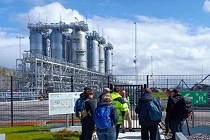 In 2024, the National Geological Institute - NRI and NORCE Norwegian Research Centre completed the project Optimization of Shallow Geothermal Energy Resources for Green Transition OptiSGE. The aim of the project was to strengthen the energy transition by applying and comparing research methods for assessing geothermal potential, which are important for the location of geothermal installations and the optimization of their technical parameters.
In 2024, the National Geological Institute - NRI and NORCE Norwegian Research Centre completed the project Optimization of Shallow Geothermal Energy Resources for Green Transition OptiSGE. The aim of the project was to strengthen the energy transition by applying and comparing research methods for assessing geothermal potential, which are important for the location of geothermal installations and the optimization of their technical parameters.
Under the project the temperature measurements in the geological boreholes with the use of manual recorders and OF DTS method were applied. During field work in south-western Poland carried out by the team from the Lower Silesian Branch of PGI - NRI, reference data from 23 geological boreholes were collected. Measurements with manual recorders were made in 22 of them, while with the OF DTS method in 14.
The results of the study allowed to determine the temperature distribution in shallow parts of the subsurface, including the recognition of geo-and anthropogenic influences. In the case of 7 boreholes, it was also possible to calculate selected geothermal parameters of the subsurface applied to optimize the use of low-temperature geothermal energy resources. The results of measurements and calculations are presented in the scientific paper Borehole Optical Fibre Distributed Temperature Sensing vs. Manual Temperature Logging for Geothermal Condition Assessment: Results of the OptiSGE Project.
Selected data of the examined boreholes including the temperature profiles were made available in the PIG-PIB, i.e.: geologia.pgi.gov.pl and GeoLOG under the geothermal energy tabs.
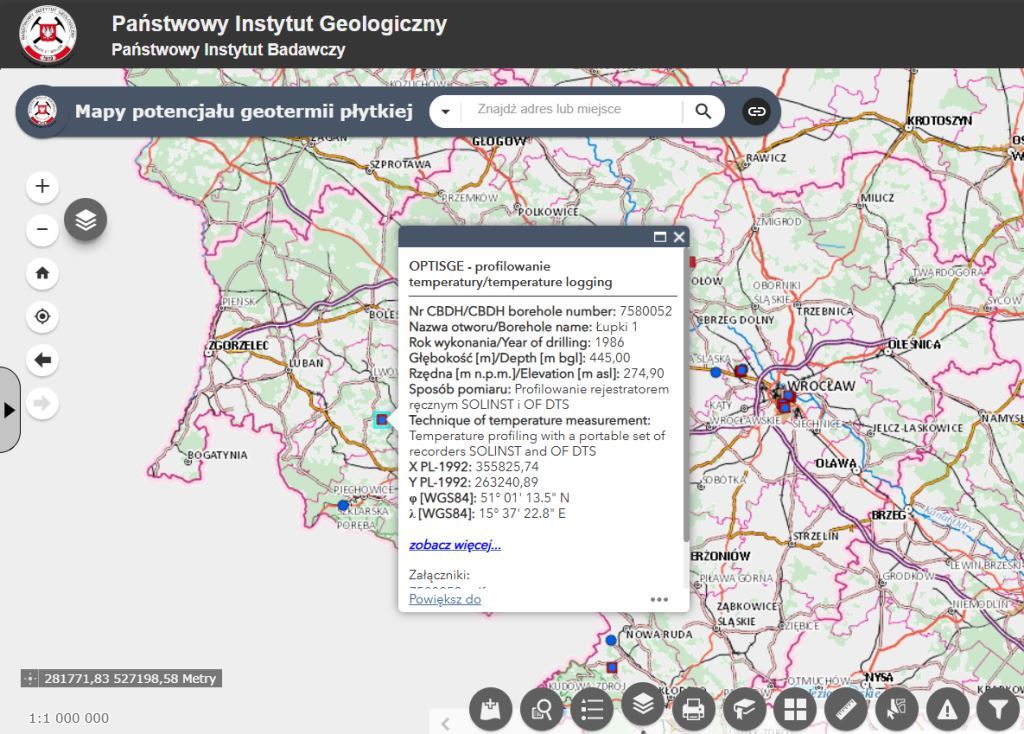
Fig. 1 Location of studied boreholes in Lower Silesia. View of the map composition from geoportal geologia.pgi.gov.pl
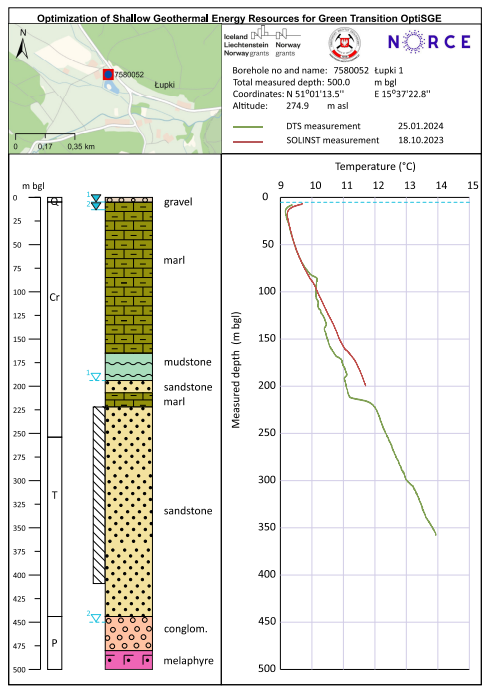
Fig. 2 Borehole card showing lithostratigraphic profile and temperature profiles measured with manual recorders and the OF DTS method. View from the GeoLOG geoportal
OF DTS is a technologically advanced research method for continuous measurement and monitoring of temperature over long distances of up to 30 km, which allows to obtain high-resolution results. In simple terms, the measuring set consists of an interrogator, laser and fiber optic cable, which is a passive temperature sensor. OF DTS is used in research in which it is important to continuously and accurately measure the ambient temperature, such as: monitoring of low-temperature geothermal installations, including underground thermal energy storage, monitoring of mining excavations, tunnels, hydrocarbon and geothermal exploration and exploitation boreholes, measurements of thermal conductivity of the ground, distributed thermal reaction tests (ang. Distributed Thermal Response Test, DTRT), as well as the operation of transmission power lines, gas, fuel, furnace temperature, reactors and other industrial equipment.

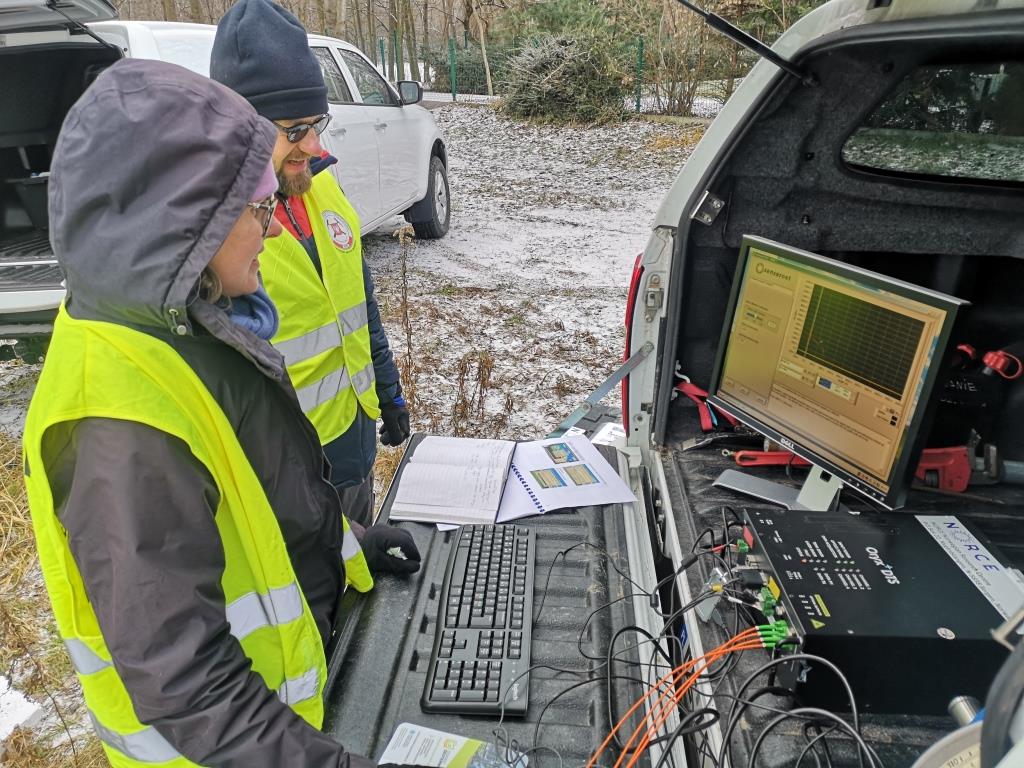
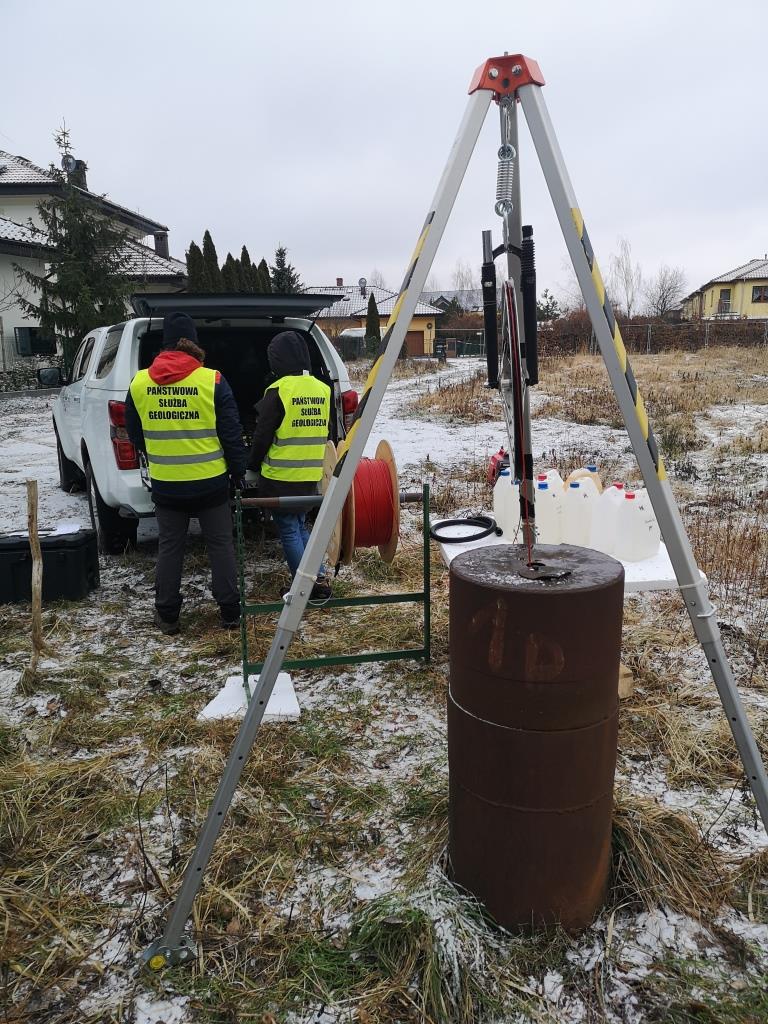
Field measurements by OF DTS method in hydrogeological boreholes in Lower Silesia
In addition to field research, OptiSGE team also organised two study visits, i.e. in November 2023 in Poland and in June 2024 in Norway, during which presentation sessions and field trips were conducted. In Poland, the participants got acquainted with the geothermal borehole Cieplice C-1 with a depth of 2 002.5 m b.g.l. which captures geothermal waters with a temperature of 80°C at the outflow and with a low-temperature geothermal installation at the Monastery in Henryków. The field program in Norway included, among others, familiarization with the geothermal installation in the Nygårdsporten Odfjell Eiendom building and The Energy Park – investment area for the implementation of the technologies related to CO2 sequestration and H2 production on an industrial scale.
The transfer of information and professional experience between partner institutions deepened the competences of the project team and enabled the acquisition of new knowledge.
OptiSGE also organised a hybrid workshop with more than 50 participants. They allowed to get acquainted with the work on geothermal energy in Norway, Poland and other countries, as well as to conduct an interesting debate.
Preliminary results of the project were presented in the form of papers at the EAGE GEOTECH conference in The Hague: Temperature Logging in Selected Geological Boreholes: DTS vs. Manual Profiling. Preliminary Results of the OptiSGE Project and during the IV Polish Geological Congress in Poznań: Assessment of the subsurface temperature regime based on temperature profiling in the selected geological boreholes in Lower Silesia Preliminary results of the OptiSGE project (page 74, in Polish).
The project Optimization of Shallow Geothermal Energy Resources for Green Transition OptiSGE was financed from the sources of the Bilateral Cooperation Fund of the European Economic Area Financial Mechanism 2014-2021 and the Norwegian Financial Mechanism 2014-2021.

Text: Maciej Kłonowski
Photos: Zespół projektu OptiSGE














 PGI-NRI offer
PGI-NRI offer Mineral resources of Poland
Mineral resources of Poland  Oil and Gas in Poland
Oil and Gas in Poland 




 Subscribe to RSS Feed
Subscribe to RSS Feed